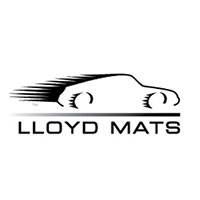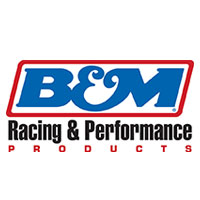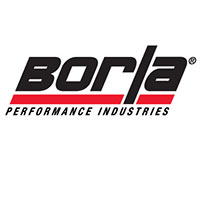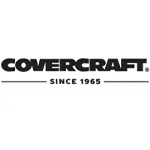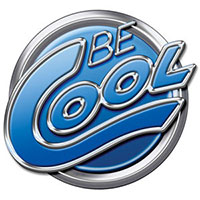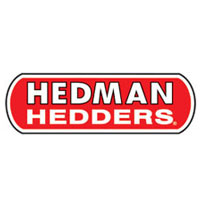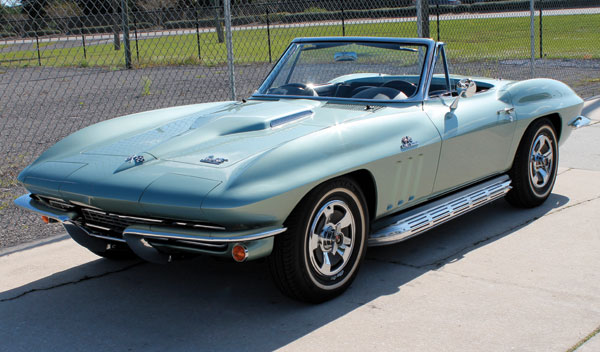The Blue Devil ZR1 is the first Corvette to emerge from the National Corvette Museum sinkhole - and it started! Encouraging news from Bowling Green, KY.
March 3, 2014 at 1:09 pm by Car and Driver. Photography by National Corvette Musesum
Read more
Posted in Corvette, Featured, Featured, Featured, Featured, Featured, Featured, Featured and Featured
Building the first Corvette. The American auto enthusiast didn’t even know they wanted a sports car; that is until they were introduced to the new Corvette at the GM 1953 Motorama. One look at the new Chevrolet two-seater Corvette was all it took. The Corvette line was here to stay.
After its introduction, Chevrolet faced the fact that they needed a place to assemble their newest model. A temporary assembly line was set up in Flint, Michigan. A total of 300 Corvettes were built that first year in Flint. All 300 were painted Polo White and featured red interiors. The standard engine was the Blue Flame six-cylinder engine, backed by a Powerglide automatic transmission.
Read more
Posted in Corvette, C1 1953-62, Featured, Featured, Featured, Featured, Featured, Featured, Featured and Featured
A massive sinkhole that opened up under a Kentucky museum Wednesday morning swallowed several vintage and rare Corvettes.
The National Corvette Museum said the Bowling Green Fire Department estimates the sinkhole to be around 25-30 feet deep and 40 feet wide.
"This is going to be an interesting situation," Museum Executive Director Wendell Strode told the Bowling Green Daily News, noting that a structural engineer is at the Bowling Green facility to evaluate the damage inside its Sky Dome section.
Six of the cars in the sinkhole are owned by the museum; two others are owned by General Motors.
Read more
Posted in Corvette, Featured, Featured, Featured, Featured, Featured, Featured, Featured and Featured
Quadrajet: Air flow at 90o air-valve opening
1-3/32-in. venturi (primary) 750
1-7/32-in. venturi (primary) 800
Dualjet
1-3/32-in. venturi 227
1-7/32-in. venturi 287
Varajet (staged 2-barrel)
28mm primary 375
30mm primary 397
Read more
Posted in Corvette, Technical, Technical, Technical, Technical, Technical, Technical and Technical
Whether you call it a Tri-Power, a six pack, or triple two-barrels, multiple carburetion is considered a high performance package. Even if they do run poorly, the “eye candy” appeal under the hood is unmistakable. Like most multiple carburetion, the Rochester 2G carburetors in this application do not work very well. In an effort to keep tuning simple for service technicians, only the center carburetor was made with an idle circuit. A person only needs to adjust the two idle mixture screws, just like any other two or four-barrel single carburetor.
Read more
Posted in Corvette, Technical, Technical, Technical, Technical, Technical, Technical, Technical and Technical
What began as a mere performance package back in 1963, the Corvette Z06 has morphed into a thoroughbred racer for track day warriors and street-loving hooligans alike. After the seventh generation Corvette Stingray debuted this time last year—arguably becoming the best Vette in the brand’s storied history—anticipation for the next track-focused Corvette has been at an all-time high
Read more
Posted in Corvette, Featured, Featured, Featured, Featured, Featured, Featured, Featured and Featured
America’s Sensational Sport Car! Creating a sensation everywhere!
The new First Generation Corvette boasted a 160 hp extra-high compression Blue-Flame engine, teamed with the new Powerglide automatic transmission. No V8 for the Corvette, yet!
Read more
Posted in Corvette, Featured, Featured, Featured, Featured, Featured, Featured, Featured and Featured
Introduced in 1965, the Quadrajet is the only four-barrel carburetor that performed well during the 1960s, through tighter emissions in the 1970s, and lent itself to electronic feedback in the 1980s. The Quadrajet takes advantage of its “spreadbore” design to offer very good fuel economy and outstanding performance. Spreadbore means that it has small primary bores and much larger secondary bores. Most versions have 1-3/8” diameter primaries (very few had 1-7/16” primaries) and all have giant 2-¼” secondaries. During normal driving, the engine operates off the small primaries. Following the laws of physics, the higher the velocity of air through the venturis, the more efficiently you can meter fuel. With the small primaries in this carb you can take a 5,000 pound Cadillac or Olds 98 and achieve 16-17 mpg, which is not bad at all considering the heft of the vehicle. When the driver gets in a hurry however, the huge secondaries open and you can pretty much watch the gas gauge move. The “air valve” type secondary had two controlling features.
Read more
Posted in Corvette, Technical, Technical, Technical, Technical, Technical, Technical, Technical and Technical
The C7 Corvette was introduced in the Fall of 2013, as a 2014 model. It’s the seventh generation Corvette and the first to bear the Corvette Stingray name since the 1976 third generation model. Body styles include both Coupe and Convertible.
The C7 Corvette’s LT1 engine brings several technologies new to the engine line, such as direct injection, Active Fuel Management (cylinder deactivation) and continuously variable valve timing. Transmission choices include a 7-speed manual or a 6-speed automatic with paddle shifters.
Read more
Posted in Corvette, Featured, Featured, Featured, Featured, Featured, Featured, C7 2014-19, Featured and Featured
For 58 of its 60 years, the Chevrolet Corvette has been powered by the legendary Chevrolet V8 engine. Technological advancements have increased output threefold – from 195 hp in 1955 to 638 hp today – as well as reliability, refinement and efficiency.
However, the fundamental architecture of the Chevrolet “small block” remains the same today as it was in 1955: a 90-degree V8 with overhead valves actuated by pushrods, and a 4.4-inch on-center bore spacing.
Read more
Posted in Corvette, Technical, Technical, Technical, Technical, Technical, Technical, Technical and Technical








